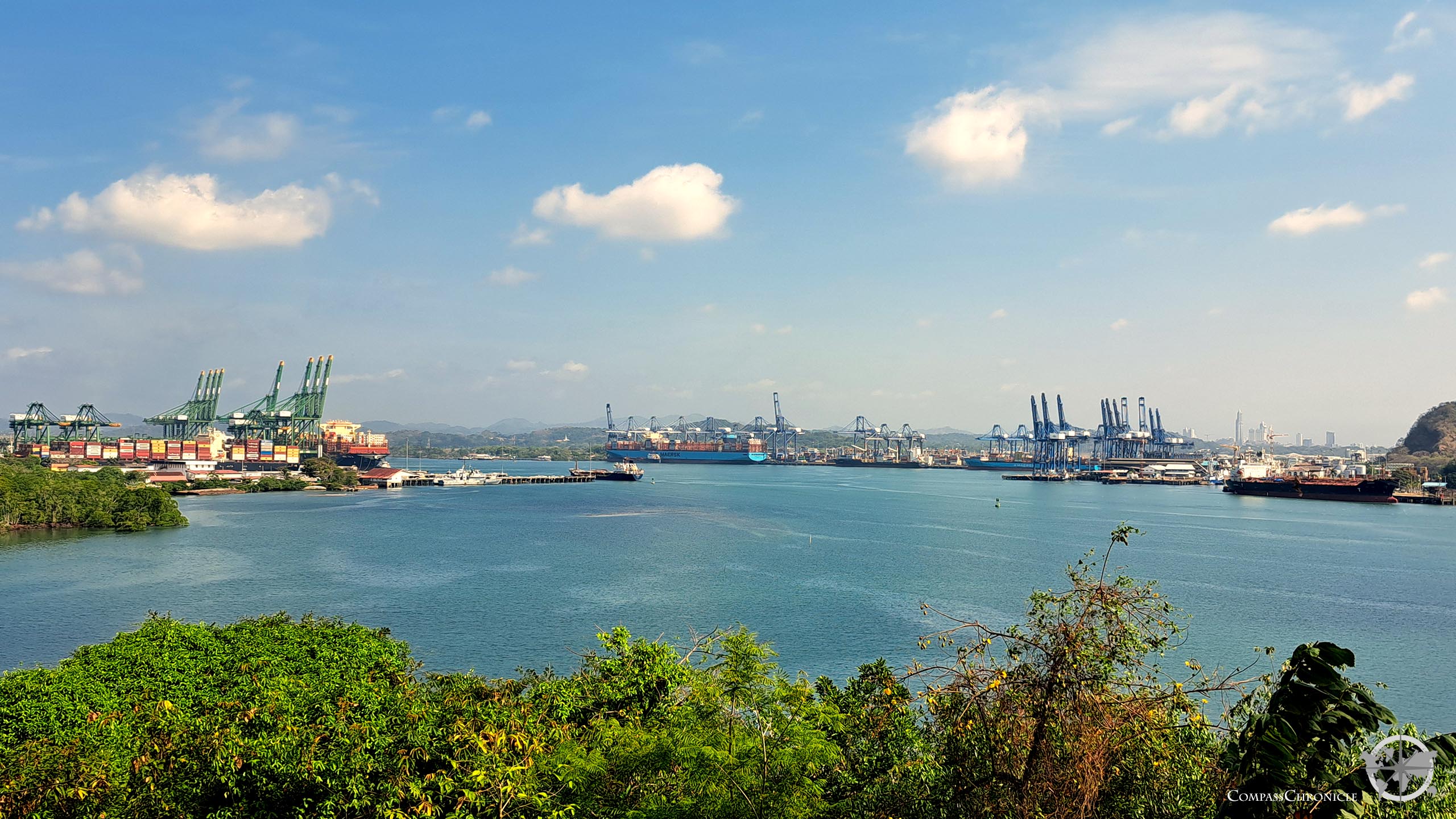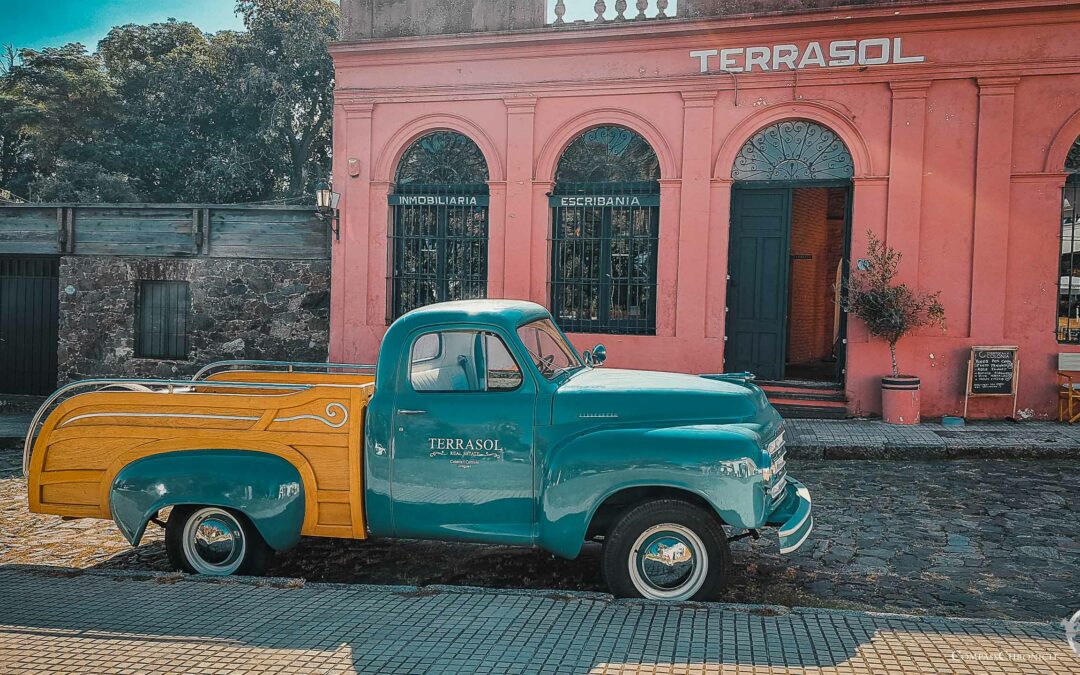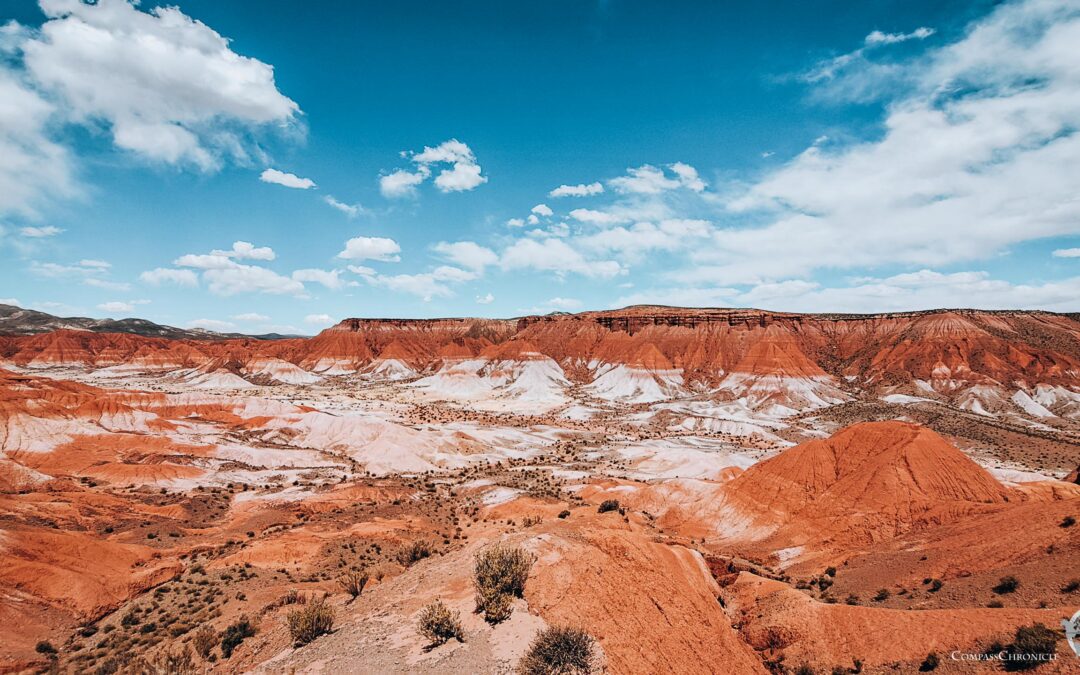When traveling on the Pan-American Highway, the question arises for all land travelers: How do I cross the Darien Gap? The Darien Gap is a piece of jungle between Panama and Colombia. The original plan for the Panamericana was to build a highway from far down in South America all the way up to Alaska – all the way through. The idea is ingenious, but the jungle on the narrow stretch of land between Colombia and Panama has still not been overcome. In addition to the jungle, many paramilitary groups have seized the largely uncivilized section of land for themselves. There are also many trafficking gangs that bring people from the south to the north towards the United States of America through this impassable terrain, which also does not contribute to the safety of tourists. All in all: impenetrable land for normal tourists like us. The only thing left to do is to ship our campervan Ben again.
Below we describe the individual steps of this shipment in more detail. For all those who want to gain a little more insight into the shipping jungle.
First contact with shipping agencies
As we would like to achieve a shipment in a reasonable amount of time, we write to several shipping agencies. These are easy to find by searching the web. For example, we have shipped with IVSS UK via the Darien Gap. It might be cheaper to look for port agents yourself and have them book the slot on the ship, but then the time required is much greater.
To be on the early side, it is sufficient to contact them about 3 – 4 months in advance. In our case, the timetables were fixed no earlier than 2 months before the date of shipment.
When contacting them, it is essential to state whether the shipment is to be made in a container or by RoRo or flatrack. Due to our height of around 2.85m, we have chosen RoRo shipping. It is a bit more expensive (around €2000 more than a container), but we don’t have to dismantle any attachments on the roof and worry about the millimeter work to fit into the container. If height is not a killer criterion for you like it is for us, a container is always preferable. At the moment, the costs of sharing a container with another overlander are cheaper and the security is much better, as no vehicle keys have to be handed over and the container remains locked until it is picked up in the destination country. With RoRo, the key is handed over and you never know exactly who will get access to the camper, respectively whether it will be locked at all.
Confirmation of the schedule and shipping date
The next step is to work with the shipping agency to define a suitable shipping date based on the ship timetables. It is important to note that there are direct routes between Panama and Colombia and others with many stopovers. As the time without campervan Ben costs us a lot in hotels and eating out, we naturally want to book a direct route. The actual crossing takes just one day.
As soon as the booking is confirmed, a deposit is often due. In our case, this was quite small in relation to the total amount.
Process for dropping off the van at the port in Panama
Before we can even think about dropping off the van at the port of Colon, Panama, we first have to go through a DIJ vehicle inspection. In addition, you have to be flexible with the date, as the document that is issued is only valid for 8 days. Therefore, if the shipping date is postponed, this inspection must also be postponed. The procedure is anything but tourist-friendly. We have to join a queue early in the morning (we arrive at ten past 6 a.m.) to reserve our inspection slot. At this time of day, we are already number 15 – and apparently only 25 cars are checked per day.
Now it’s time to wait. No acts start before 07:30, we simply keep our little piece of paper with the number 15 and exchange information with fellow travelers. We will see many of them again several times in the two ports and later at campsites in Colombia.
With the number 15, we are the last to be checked in the first batch. The inspector first has to verify the copies: 2x passport copy of the vehicle owner, 2x passport copy of the entry stamp to Panama, 2x copy of the vehicle registration document, 2x copy of the TIP (temporary vehicle import to Panama). This takes a good hour. After this step, the inspector goes through each vehicle in turn to check the VIN. And this is the only information the inspector is really interested in. At around 10 a.m. we are finished for the moment. But in order to be allowed to ship the vehicle, we have to show up at 1 pm for the next phase of waiting. From 1 p.m. on the same day, we wait for the official letter to be issued that we are allowed to export our car from Panama again. The application form in this office is completed in 2 minutes. Until we receive the document (again we wait for everyone in the group and not just one after the other…) the whole afternoon passes until we are finally in possession of an official export permit for Ben at around a quarter past four. Important here; be sure to check all the details on the document for errors, one spelling mistake can stop the whole shipment! And indeed, of the 20 or so people present, around 4 of them have errors!
In the meantime, we send the above-mentioned documents as a photo by e-mail to our agency so that they can also do the paperwork on their side. We are now ready for the drop-off at the port in Panama.
Dropping off the campervan in Colon, Panama
The shipment was postponed several times in advance by a few days. In the end, the actual shipping date was around a week later than originally planned and confirmed. This is normal and no cause for concern. A certain amount of flexibility must always be shown during shipping.
The day has finally come for us to leave the port. We are supposed to be in Colon, Panama at 08:30 to drive our campervan Ben to the port area and to wait for the shipment without him. The handover itself is quite uncomplicated and for a total of nine vehicles in our group quite quick, only about 4 hours. Several checks are carried out. Among other things, the general condition of the vehicle is documented and tested for illegal substances with a drug-sniffing dog. Doesn’t make much sense heading south, but everything should be in order. And as a novelty, lithium batteries are checked for the first time on this shipping route. According to the regulations, these have not been permitted for some time, but the actual inspection has only now taken place for the first time on this route. And indeed, the batteries in one van were found to be dangerous and the vehicle owner had to take the two heavy battery packs back out of the port. For travelers who inform the agency in advance, it is possible to hand over the batteries earlier and ship them together with the vehicle on the same boat but in a container. This means that the shipping of the lithium batteries is also done correctly. The only drawback is that the van is not ready for use a few days before delivery and one or two days after receipt because the battery(ies) is still missing.
The wait until we can pick up our campervan Ben in Cartagena is longer than expected for such a short shipment. We also had bad timing by chance. We drop off the campervan on FR, 23.02.2024, in Colon, Panama. The ship loads Ben on DO, 29.02.2024, and unloads him again on FR, 01.03.2024, in Cartagena, Colombia. In Cartagena, we can finally pick Ben up again on Wednesday evening, 06.03.2024. We had to or were allowed to spend a whole 12 nights in hotels and AirBnBs until we got our camper back. For a shipment of just one day and a distance of roughly 500 km.
Receiving our campervan in Cargagena, Colombia
To organize the pick-up in Cartagena, Colombia, we had to ask our port agent ourselves quite often via WhatsApp what was going on. Although we pay for their service, informing customers is apparently not included in the price. On Monday, we had to visit the office for the first time to pay the port fees and the agent. We were then told to go to the customs office at the container port the next day for two signatures and finally on the third day we were driven to the port with the vehicles about 30km outside Cartagena to collect the vehicle again. This was actually so smooth so far. The only thing that made this process rather stressful was the reluctance of our agent to communicate, as we didn’t really know what was supposed to happen when.
There was one extra hurdle during these three days. We had to take out the mandatory liability insurance for personal injury in Colombia without having the new TIP (temporary import permit for the vehicle) in our hands. This is only possible via another WhatsApp contact, who then of course charges more than double the actual insurance premium. The official way with an insurance company with offices in Cartagena is only possible with the TIP, which means at least a day’s delay in getting the car out of the port. After taking into account the cost of the hotel and meals in the city, we decide to order the expensive insurance.
In the end, the vehicle owner, Paddy in our case, was called to the local port agent’s office in the middle of the afternoon. From there, we take a shared cab to the port and then, after some more waiting time (about 1.5 hours), finally enter the port area. The actual process is again only a few minutes until the car can be driven out of the port.
And with that process we have finally arrived on our dream continent of South America!
Cost summary
For all those who will be tackling this shipment after us, we have compiled our costs here as a rough guide. This should serve as a reference and orientation point. And by the way: Friends of ours have shipped on the same ship from Galveston, Texas, to Cartagena, Colombia, and paid less for shipping with a vehicle of the same size as a RoRo shipment. This information could also serve as an inspiration to consider more creative routes.
Port fee and agent Panama: 220.- US-$ / 195.- CHF
Shipping fee with IVSS UK: 4061.- € / 3’900.- CHF
Port fee from Colombia: 5’007’400.- COP / 1’140.- CHF
In addition, there are costs for overnight stays in Panama City and Cartagena of around CHF 425. The flight cost CHF 300. In addition, there were around CHF 600 for meals during this time.
It is quite obvious that such a shipment with all the real costs is rather a luxury way of traveling. And we also tried to keep the costs of hotels and flights low. Depending on your taste, this can result in a substantial higher sum of these costs.
We are really happy that, apart from the many waiting times, the shipment went very smoothly and without any damage or theft. We are still really looking forward to the new continent of South America!










0 Comments